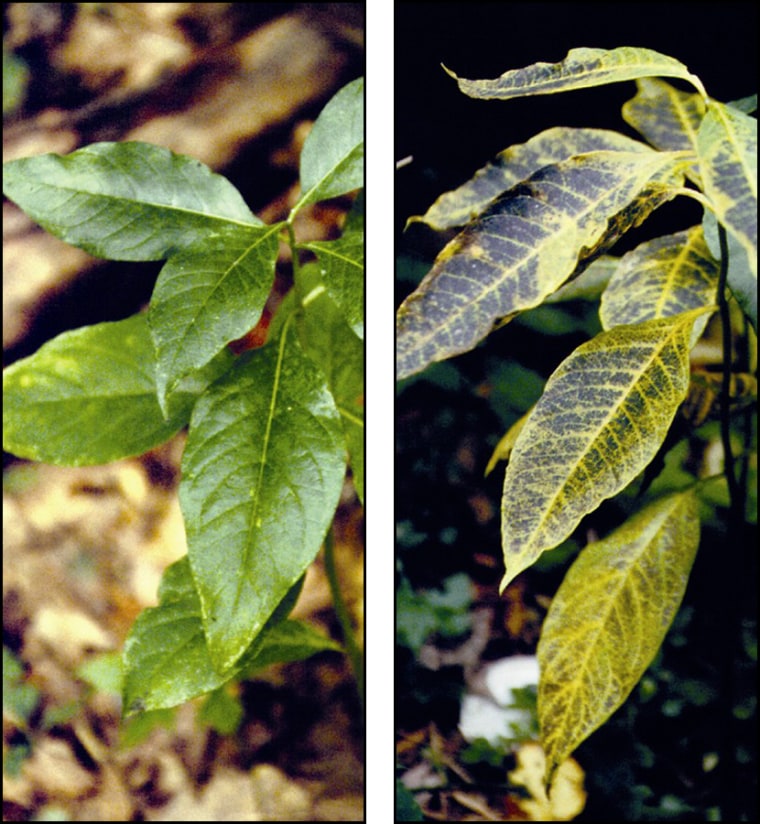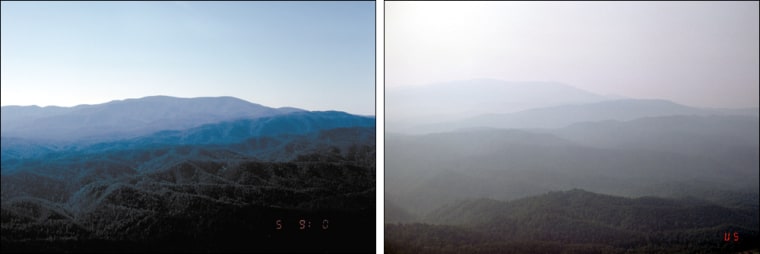Planning to visit any national parks this summer? If so, a report out Thursday stamps a stigma on five that it labels as having the worst air quality in the system of 388 national parks.
Authored by the National Parks Conservation Association and two smaller groups, the report concludes that air quality in the national parks has not improved even though Congress tightened the Clean Air Act in 1990.
That poor quality affects not only views, the activists noted, but can have long-term, detrimental health effects on plants, trees and animals.
Using haze, acid precipitation and ozone, also known as smog, as their criteria, the groups ranked these five parks in order of having the worst air quality:
- Great Smoky Mountains National Park in Tennessee and North Carolina. Named for its naturally occurring blue haze, the park rated worst in terms of acidity and second worst for smoggy days as well as haze, with average summer visibility for 1999-2003 at 20 miles. Natural visibility for the parks studied ranged from 80-120 miles.
- Mammoth Cave National Park in Kentucky. Average summer visibility: 17 miles.
- Shenandoah National Park in Virginia. Average summer visibility: 24 miles.
- Acadia National Park in Maine. Average summer visibility: 54 miles.
- Sequoia-Kings Canyon National Parks in California. Average summer visibility: 39 miles.
“In the Great Smoky Mountains, our most polluted national park, ozone pollution rivals urban areas, and even exceeds that of New York City, and Washington, D.C.,” Harvard Ayers, chairman of the group Appalachian Voices, said in a statement accompanying the report.
The report focused on 13 national parks with extensive air quality monitoring. "Visibility is improving at Mammoth Cave, the haziest park, as well as Shenandoah, but seven of the 13 parks the report examines showed a significant worsening of ozone since 1990, and none has shown a significant trend for improvement," it stated.
The groups, as the Environmental Protection Agency has as well, tied almost all of the air pollution from sources outside park boundaries — particularly coal-fired power plants, cars and industrial facilities upwind of the parks.
The EPA itself earlier this year found unhealthy levels of ozone in these national parks: Acadia, Shenandoah, Great Smoky Mountains, Rocky Mountain, Joshua Tree, Yosemite, and Sequoia-Kings Canyon national parks along with Cape Cod National Seashore.

The NPCA noted that President Bush's National Parks Legacy Project includes a goal of reducing park haze. The EPA last April proposed a park haze rule, but the NPCA said it fears it will exempt some power plants by allowing "inadequate programs to serve as a substitute."
“Visitors expect to find clean air and clear skies in all our national parks, but this is sadly not the case,” Jill Stephens, an NPCA analyst, said in the statement. “The current administration must strengthen its proposed park air quality rule and clean up outdated, eastern power plants.”
The full report is online at www.npca.org/codered.
